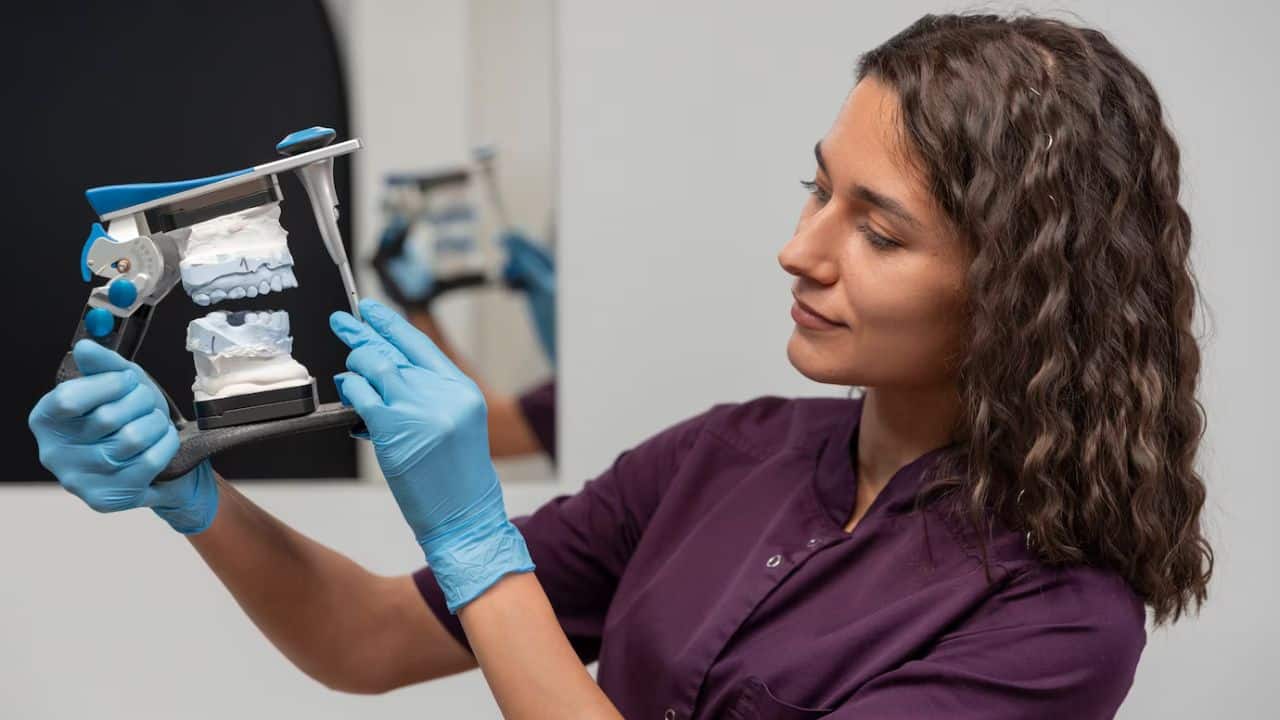Why It’s Important to Understand Dental Procedures
Dental appointments can sometimes feel overwhelming, especially if you’re uncertain about the procedures being recommended. By gaining a better understanding of common dental treatments, you can approach each appointment with confidence and make informed decisions about your oral health. Knowing what each procedure entails and how it benefits you makes it easier to feel comfortable and prepared.
At Surbiton Dental practice, Confidental, the team believes in educating patients about their treatments. Their goal is to empower patients with the knowledge they need to take charge of their oral health. Here, we’ll walk through some of the most common dental procedures, explaining their purpose, what to expect, and why they’re essential to a healthy smile.
Dental Examinations and X-Rays: The Basics of Oral Health
Regular dental examinations are the foundation of good oral health. During an examination, your dentist will check for signs of decay, gum disease, and other potential issues. Examinations are typically recommended every six months, though your dentist may suggest more frequent visits based on your unique needs.
- X-Rays: X-rays are an essential tool that allows dentists to see beneath the surface. They help identify issues that aren’t visible to the naked eye, such as cavities between teeth, bone loss, or impacted teeth. Modern dental practices often use digital X-rays, which reduce radiation exposure and provide instant results.
- Oral Cancer Screening: Some dental exams include an oral cancer screening, where your dentist examines your mouth, throat, and surrounding tissues for any signs of abnormal growth.
Routine examinations and X-rays are vital for detecting problems early, making treatments easier, quicker, and less invasive.
Dental Cleanings and Scaling for a Healthier Smile
Professional dental cleanings, often referred to as scaling or prophylaxis, play a crucial role in maintaining oral health. Even with regular brushing and flossing, plaque and tartar can build up in hard-to-reach areas.
- Plaque and Tartar Removal: Plaque is a sticky film of bacteria that forms on the teeth. When not removed, it hardens into tartar, which cannot be cleaned away by brushing alone. Scaling removes both plaque and tartar, helping to prevent gum disease and tooth decay.
- Polishing: After scaling, your dental hygienist will polish your teeth, removing surface stains and leaving your smile looking brighter.
Regular cleanings help keep your teeth and gums healthy, supporting your oral hygiene routine and reducing the risk of more complex dental problems.
Fillings: Restoring Teeth and Preventing Decay
Fillings are one of the most common restorative dental procedures, used to repair teeth affected by cavities or minor fractures. They restore the tooth’s function, prevent further decay, and enhance your smile’s appearance.
- The Procedure: Your dentist will first numb the area around the affected tooth, then remove the decayed portion. After cleaning the area, they will fill it with a material such as composite resin, amalgam, or porcelain.
- Types of Fillings: Composite resin fillings are tooth-coloured and blend in naturally with your teeth. Amalgam (silver) fillings are highly durable and often used for back teeth, while porcelain fillings are known for their strength and stain resistance.
Fillings are essential for protecting your teeth from further damage, restoring their structure, and maintaining your overall oral health.
Root Canal Treatment: Saving Your Natural Tooth
Root canal treatment, often called endodontic therapy, is a procedure used to save a tooth that has become severely infected or decayed. Despite common misconceptions, root canal treatment is generally no more uncomfortable than having a filling, thanks to modern dental techniques.
- The Purpose: Root canal treatment removes infected or damaged tissue from within the tooth’s pulp chamber and root canals. This prevents the infection from spreading and preserves the natural tooth structure.
- The Procedure: After numbing the area, your dentist will create an opening in the tooth, remove the infected pulp, and clean and seal the root canals. In many cases, a crown is placed over the treated tooth to strengthen it.
Root canals are highly effective in saving teeth that might otherwise require extraction, helping you maintain your natural smile.
Extractions: When Tooth Removal Becomes Necessary
Tooth extraction is the removal of a tooth from its socket in the jawbone. While dentists strive to preserve natural teeth whenever possible, extractions are sometimes necessary to protect your oral health.
- Reasons for Extraction: Common reasons for extraction include severe decay, advanced gum disease, overcrowding, and impacted wisdom teeth.
- The Procedure: Extractions can be simple or surgical. Simple extractions involve loosening and removing the tooth with specialised instruments, while surgical extractions are more complex, often involving the removal of gum or bone tissue.
Extractions are typically followed by options for tooth replacement, such as dental implants or bridges, which help restore your smile’s function and appearance.
Dental Crowns and Bridges for Restorative Care
Crowns and bridges are prosthetic solutions designed to restore the function and appearance of damaged or missing teeth. Both play a significant role in supporting your bite and improving your smile.
- Crowns: A crown is a cap that covers a damaged or weakened tooth. It restores the tooth’s shape, size, and strength, protecting it from further damage. Crowns are often recommended after root canal treatment or when a filling isn’t sufficient to restore the tooth.
- Bridges: A bridge is used to replace one or more missing teeth. It consists of one or more artificial teeth, held in place by crowns on the adjacent natural teeth. Bridges help prevent neighbouring teeth from shifting out of position, maintaining proper alignment.
Crowns and bridges are durable, long-lasting options that enhance both the function and appearance of your smile.
Teeth Whitening and Cosmetic Options for a Brighter Smile
Cosmetic dentistry has become increasingly popular as patients seek ways to enhance their smile. Teeth whitening is one of the most requested treatments, offering a simple and effective way to brighten teeth.
- Teeth Whitening: This procedure involves applying a safe bleaching agent to lift stains and lighten the teeth’s natural colour. Many dental practices offer both in-office and take-home whitening options, providing flexibility and convenience.
- Veneers: Veneers are thin shells of porcelain or composite resin placed on the front of teeth to correct imperfections such as discolouration, chips, or minor alignment issues. They provide a natural, long-lasting solution for a flawless smile.
Cosmetic treatments are not only about aesthetics; they can also boost confidence and enhance overall wellbeing by improving self-esteem.
Embracing Dental Care with Confidence
Understanding the range of dental procedures available allows you to make informed choices about your oral health. Each treatment has its unique purpose, whether it’s preserving your natural teeth, restoring function, or enhancing your smile’s appearance. With the guidance of a trusted dentist, you can approach dental care confidently, knowing that each step supports your long-term health and wellbeing.
So, the next time you sit in the dental chair, you’ll have the knowledge to feel at ease, understanding the care and precision that goes into every procedure. Whether it’s a routine check-up or a more complex treatment, each visit is a step towards a healthier, happier smile.







































